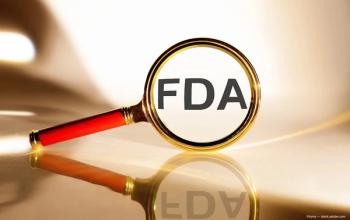
Development of maculopathy associated with systemic medications
Key Takeaways
- Five systemic drugs, including fingolimod and apixaban, were identified with under-recognized maculopathy risks using pharmacovigilance and health claims analysis.
- The study found increased incidence rate ratios for maculopathy with these drugs, highlighting the need for regular ophthalmic monitoring.
A new study conducted by researchers at Hanyang University, Seoul, Republic of Korea, and the University of North Carolina, Chapel Hill, identified 5 systemic drugs that cause maculopathy that had previously been under-recognized. The researchers, led by Jiyeong Kim, PhD, combined pharmacovigilance signal detection and nationwide health claims analysis to identified elevated incidence rate ratios.1 Kim is from the Department of Pre-Medicine, College of Medicine, and Biostatistics Laboratory, Medical Research Collaborating Center, Hanyang University
“Drug-induced maculopathy can be a relevant but potentially preventable condition that affects the macula.2,3 It can lead to visual impairment ranging from subtle changes to irreversible vision loss, depending on the severity of damage. There are well-documented associations of drug-induced retinal toxic effects, such as hydroxychloroquine retinopathy or pentosan polysulphate maculopathy4-7; however, the potential harm of other systemic drugs associated with macular toxic effects may be underexplored,” Kim and colleagues explained in their study published in JAMA Ophthalmology.
They theorized that they could better identify new or under-recognized potentially toxic drugs using a combination of pharmacovigilance signal detection with evidence from the clinical practice setting, they explained.
A two-part study design
They explained their two-pronged approach. The study included disproportionality analysis for candidate identification, using 15 ,748 maculopathy-related individual case safety reports from the FDA Adverse Event Reporting System (FAERS) between July 2014 and December 2023, and a population-based cohort study for association evaluation using the South Korean Health Insurance Review and Assessment Service (HIRA) database that included about 50 million patients.
The main outcomes were the reporting odds ratios for signal detection in FAERS and the incidence rate ratios, hazard ratios, and cumulative incidence of maculopathy in HIRA.
What drugs did the analysis pinpoint?
The following systemic drugs with under-recognized macular toxic effects were identified: fingolimod, apixaban, paclitaxel, ibrutinib, and sildenafil. These were listed among the top 30 drugs with maculopathy signals in the FAERS.
In the HIRA, the incidence rate ratios for maculopathy after exposure to the drugs compared with preexposure were 1.92 (95% confidence interval [CI], 0.62-5.96) for fingolimod, 3.08 (95% CI, 2.68-3.54) for apixaban, 2.85 (95% CI, 1.62-5.02) for paclitaxel, 3.71 (95% CI, 2.58-5.34) for ibrutinib, and 2.75 (95% CI, 2.17-3.48) for sildenafil. The cumulative incidence rates ranged from 4.4% (fingolimod) to 15.7% (apixaban), the study reported.
The authors also observed dose-response relationships for paclitaxel (hazard ratio [HR], 2.01; 95% CI, 1.77-2.29) for third quartile administration compared with the first quartile and for ibrutinib (HR, 4.82; 95% CI, 1.39-16.81) for the fourth quartile compared with the first quartile. The investigators emphasized that “clinicians should be cautious when prescribing these drugs to patients with higher cumulative doses and implement regular ophthalmic screenings for the detection of maculopathy, especially if subsequent studies confirm these findings.”
The study concluded, “This cohort study identified several candidate drugs with previously underrecognized risks of maculopathy through both pharmacovigilance data and subsequent large-scale encounter database analyses. Our approach demonstrated the feasibility of detecting and evaluating drug-related maculopathy associations in a clinical setting. Specifically, apixaban, paclitaxel, ibrutinib, and sildenafil were associated with an increased risk of maculopathy, with different clinical presentations, particularly at higher cumulative doses. These findings highlight the potential importance of ongoing pharmacovigilance efforts and the need for regular ophthalmic monitoring of patients receiving these medications to enable early detection and timely intervention if subsequent studies confirm these findings.”
References
Kim J, Ahn SJ, Park J, Gower EW, Chung J. Systemic drugs associated with maculopathy. JAMA Ophthalmol. 2025; published online October 23. doi:10.1001/jamaophthalmol.2025.3612
Khan MJ, Papakostas T, Kovacs K, Gupta MP. Drug-induced maculopathy. Curr Opin Ophthalmol. 2020;31:563-571. doi:
10.1097/ICU.0000000000000714 Takefuji Y. Drug-induced macular oedema. Eye (Lond). 2024;38:2828. doi:
10.1038/s41433-024-03117-x Marmor MF, Kellner U, Lai TY, Melles RB, Mieler WF; American Academy of Ophthalmology. Recommendations on screening for chloroquine and hydroxychloroquine retinopathy (2016 revision). Ophthalmology. 2016;123:1386-1394. doi:
10.1016/j.ophtha.2016.01.058 Pearce WA, Chen R, Jain N. Pigmentary maculopathy associated with chronic exposure to pentosan polysulfate sodium. Ophthalmology. 2018;125:1793-1802. doi:
10.1016/j.ophtha.2018.04.026 Kim J, Kim KE, Kim JH, Ahn SJ. Practice patterns of screening for hydroxychloroquine retinopathy in South Korea. JAMA Netw Open. 2023;6:e2314816. doi:
10.1001/jamanetworkopen.2023.14816 Kim J, Kwon HY, Kim JH, Ahn SJ. Nationwide usage of pentosan polysulfate and practice patterns of pentosan polysulfate maculopathy screening in South Korea. Ophthalmol Retina. 2024;8:246-253. doi:
10.1016/j.oret.2023.10.005
Newsletter
Don’t miss out—get Ophthalmology Times updates on the latest clinical advancements and expert interviews, straight to your inbox.
















































.png)


